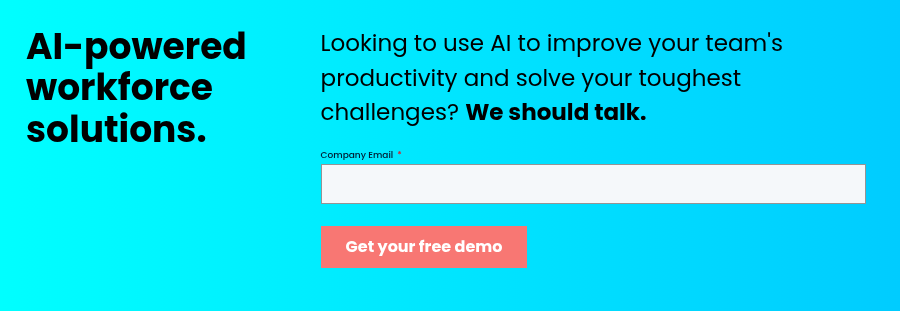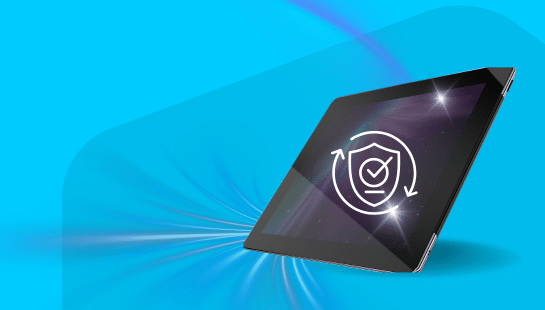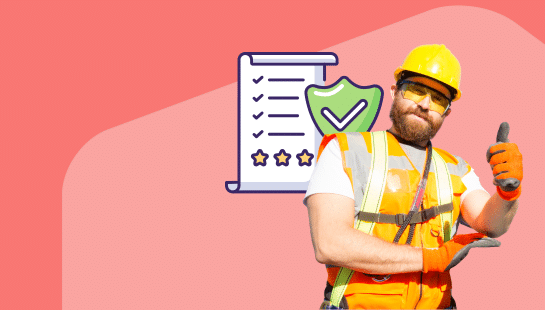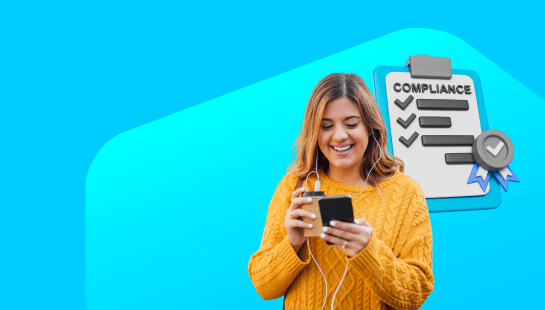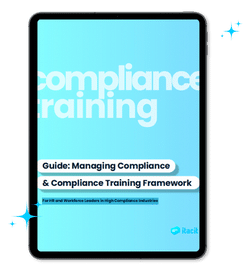AI in employee experience has become a business necessity faster than expected, with 94% of business leaders agreeing that it’s critical for success. This technology now goes way beyond simple task automation. About 66% of employee experience professionals say AI and bots have evolved past simple task delegation.
Companies that implement AI solutions in their workplace see real results. The numbers tell the story: workers who say their technology makes productivity possible are 158% more likely to participate in their work than those who don’t. Generative AI reshapes every stage of employee experience, from the original onboarding through long-term retention. On top of that, 71% of consumers expect customized interactions from companies, and your employees want the same thing.
AI drives the future of employee experience, as the market for AI in workforce skill development and training grows at a compound annual growth rate of 31.2% through 2030. But this quick growth comes at a crucial time, since only 64% of employees plan to stay with their current organizations, down from 70% in 2021. In this piece, you’ll find how tools like iTacit’s AI HR assistant help create customized, quick, and engaging employee experiences that improve productivity and boost retention.
How generative AI transforms onboarding
A new employee’s first day can shape their entire view of your company. The old way of onboarding meant dealing with endless paperwork and information overload. Today, generative AI changes this crucial part of the employee’s first steps with smarter, personalized approaches.
AI-driven onboarding workflows
Manual onboarding takes about 15-20 minutes to set up for each new hire. AI automation reduces this to under a minute. This massive time savings creates room for what really counts.
Hitachi used to struggle with 10-15 day onboarding periods full of manual forms. Their custom AI solution helped them reduce this time by four days and cut HR involvement from 20 hours to just 12 hours per new hire.
AI handles the administrative work through:
- Automated document collection and verification
- Smart workflows that notify departments
- Simple compliance management with automated checklists
- Coordinated system access setup on day one
One HR leader said it best: “All these little tasks are very routine, and they’re just perfect for AI”. Your team can build meaningful connections with new employees instead of chasing signatures or fixing login problems.
AI-driven workflows are valuable for growing companies. Texans Credit Union found that using robotic process automation let new hires “focus on learning as opposed to trying to figure out how to log in”. This creates an easier path to productive work.
Personalized welcome experiences
AI is making generic onboarding packets obsolete by analyzing each employee’s background to create custom experiences. These platforms look at previous work experience, job role, and learning priorities to build tailored paths.
AI creates personalized content that focuses on what each person needs to learn instead of using one-size-fits-all training modules. These systems adapt as employees progress and show the right information at the best time.
Companies using AI-powered personalization see a 45% boost in engagement compared to standard approaches. This personal touch includes:
- Custom welcome messages for each role and department
- Resource suggestions based on career goals
- Multilingual materials for diverse teams
- Interactive training that matches individual motivation
Smart algorithms can schedule optimal meetings by checking team calendars and availability. This cuts coordination time by 85% while considering time zones and work hours.
Real-time answers with AI HR assistants like iTacit
New employees always have questions, even with thorough onboarding. These questions used to wait until a manager or HR person was free. AI assistants now provide instant help.
iTacit’s AI Assistant shows this change by giving employees quick access to your company’s knowledge base. New hires can type questions and get clear answers specific to their role. iTacit’s data shows that 87% of users find it easier to get answers through the AI Digital Assistant.
HR teams save about 4.5 hours weekly on employee questions. Your HR staff can work on strategic projects instead of answering the same questions repeatedly.
These AI assistants offer more benefits:
- They work 24/7 across time zones
- They give consistent answers that match current policies
- They reduce compliance risks with correct procedures
- They show what employees ask about, revealing training gaps
A surprising 93% of HR users didn’t expect what employees actually searched for. This shows how AI assistants reveal employee needs that might stay hidden otherwise.
Brandon Hall Group’s research shows that good onboarding helps companies keep 82% more new hires and boost productivity by over 70%. Using generative AI throughout onboarding creates a strong foundation for long-term employee success.
Accelerating learning and development with AI
AI has changed how organizations train their employees after onboarding. The old one-size-fits-all training methods don’t work anymore. Modern organizations need better ways to help their teams learn and grow.
Adaptive learning paths based on skill gaps
People learn best when training matches their needs. MIT research shows that executives expect 38% of their workers will need “fundamental retraining or replacement” in the next three years to fix skill gaps. This makes AI-powered adaptive learning a valuable tool.
Modern employee training LMS look at how employees perform, learn, and what their jobs need to spot knowledge gaps. The system creates custom learning paths that match each employee’s strengths, career goals, and areas needing improvement. Managers can see their team’s progress through up-to-the-minute data analysis and quickly spot skill gaps.
This system works well. AI gathers data from performance reviews and training records. It then checks how employees stack up against industry standards and job needs. Based on this, it sends targeted training content to fill specific gaps.
“Each employee receives a customized learning path based on their strengths, weaknesses, and career goals,” says a learning expert. This personal touch makes learning stick better and gets more people to finish their training.
AI-powered microlearning modules
Long training sessions are becoming a thing of the past. Research shows 35% of organizations find short learning sessions work better. AI makes these bite-sized lessons even more effective.
AI changes microlearning by:
- Suggesting relevant lessons based on performance
- Making lessons harder or easier as needed
- Giving personal feedback to help learning stick
- Seeing where learners stop paying attention
AI content tools can scan text, pull out key ideas, and create short learning modules quickly. These tools use natural language processing to read documents, find important points, and turn them into interactive lessons.
“By tailoring content and format to individual needs, priorities and abilities, AI makes training resources more available and relevant,” states an industry report. This personal approach helps people remember what they learn because they get exactly what they need.
Real-time feedback and coaching
Nobody wants to wait weeks for feedback anymore. AI gives instant guidance to help employees grow continuously.
AI coaching tools learn about each person’s skills and suggest ways to improve. TalkMeUp watches video meetings and checks body language, voice tone, and message effectiveness to help people communicate better.
Tools like Rehearsal let sales teams upload videos for AI to analyze, checking things like how well they close deals. AI can look through more information than human managers, so it finds ways to improve faster.
Lepaya uses AI avatars so employees can practice tough conversations safely. This works well because it:
- Gets people involved instead of just listening
- Creates real-life scenarios
- Lets people use what they’ve learned
“The more personalized we can make coaching, the better the results will be,” notes an expert, adding that “AI can make that happen” by fitting the experience to each person’s needs.
AI also helps through smart tutoring systems that correct mistakes right away. The iTacit AI Assistant shows this by answering questions and guiding employees as they pick up new skills.
Boosting employee engagement through personalization
Individual-specific experiences shape how connected employees feel to their work. A newer study, published by AI-powered recognition programs, showed higher employee satisfaction scores and better workforce morale. AI creates these personal moments that improve engagement.
AI-generated recognition and rewards
Regular recognition programs don’t deal very well with consistency and often miss achievements. AI transforms this by automating recognition at crucial moments. Every contribution gets noticed.
AI recognition systems excel at:
- Triggering acknowledgment when projects wrap up
- Tracking progress on KPIs and celebrating milestones
- Identifying smaller contributions that humans might overlook
- Maintaining fairness through consistent criteria
“Nothing replaces the value of authentic, human interactions to make employees feel appreciated,” says one expert. The best AI systems complement human interaction rather than replace it. To name just one example, AI can suggest personal appreciation messages based on each employee’s work style and achievements.
Results speak volumes. Companies using these tools report stronger team bonds. Employees become more invested in collective success. IBM’s Watson Career Coach demonstrates how AI recognition supports career development, creating an effective combination that improves engagement.

Sentiment analysis for engagement tracking
Gauging employee sentiment has always been difficult. AI-powered sentiment analysis now processes feedback from surveys, emails, and communication channels. This technology measures workforce emotions with remarkable accuracy.
Organizations worldwide know that healthy employee engagement cuts business costs. The HAPI ETF, which helps investors buy into companies with high employee happiness scores, has outpaced the S&P 500. This points to a clear link between employee satisfaction and business success.
Advanced sentiment analysis tools like Qualtrics EX25 help organizations understand employee experiences through:
- Natural language processing that interprets emotional tones
- Data visualization that transforms complex feedback into useful insights
- Omni-channel listening that captures voices across all platforms
This technology helps prevent high turnover by spotting disengagement before employees resign. Organizations can identify potential issues early, address them quickly, and build a workplace where employees thrive.
Creating personalized communication strategies
Information overload creates real problems. Emails, texts, notifications, and messages bombard employees. This causes stress and hurts productivity. Personal communication helps cut through this noise.
Simpplr’s research shows teams using targeted communication strategies deliver 48% better results than those treating their audience as one group. Teams that segment and target their audience rated their internal communications effectiveness 7% higher than non-targeters.
AI algorithms group employees by job role, location, or interests to send relevant messages to the right people. Firstup saw a 151% year-over-year increase in engagement with employee communications using this approach.
iTacit’s AI HR Assistant shows this personalization by analyzing individual priorities and sharing information in formats that appeal to each employee’s learning style. This creates a workplace where employees feel valued and understood.
To get the best results when implementing AI for personalized communication:
- Use AI to reshape content into different formats based on preference
- Build employee personas beyond simple factors like location
- Use data to measure effectiveness through content consumption metrics
Successful internal teams understand each employee’s unique values and priorities. AI respects this individuality and doesn’t just improve communication, it builds the foundation for an inclusive, productive workplace where employees feel truly connected.
Streamlining internal support and knowledge access
Employees waste up to 1.8 hours daily looking for information in disconnected systems. Modern AI tools create smarter ways to find organizational knowledge and support.
AI chatbots for IT and HR queries
Long waits for basic IT or HR answers are becoming a thing of the past. AI chatbots now work right inside business communication tools like Microsoft Teams or Slack. This makes everything easier for employees and speeds up the whole process.
These smart assistants understand the context behind employee questions through natural language processing. They give quick answers to password resets or benefits questions by recognizing what employees need. Quick responses matter – simple, frequent questions don’t need human help anymore.
IT teams use these chatbots to:
- Automate user provisioning and de-provisioning
- Handle account unlocks and password resets
- Fix VPN-related problems
- Manage access compliance processes
AI chatbots connect with talent management systems to make HR tasks simple. Employees just type what they need in plain language like “I’d like to request time off” into their chat app. The chatbot takes care of everything else by processing and recording the request.
50% of HR leaders already use AI chatbots or plan to within a year, according to Oracle’s survey. The business benefits are clear – Juniper Networks estimates companies could save $8 billion yearly worldwide.
iTacit’s AI HR Assistant shows this change by giving quick answers while gathering data about employee needs. A surprising 93% of HR users didn’t expect what employees actually searched for.
Smart knowledge base recommendations
Traditional knowledge bases often fail because finding information is hard. AI fixes this by personalizing content delivery, suggesting relevant information, and finding internal experts.
AI transforms how we access knowledge through:
The technology summarizes long documents automatically so users get key points without reading everything. Smart search engines deliver exactly what users need, which cuts down search time. AI tags content by spotting important concepts and adding keywords, which makes searching easier.
AI helps deliver knowledge across regions through instant translation. This keeps information reliable no matter where employees work.
AI excels at showing the right information at the right moment. Advanced systems can find experts by analyzing their work and connect team members when needed.
Reducing ticket volume with self-service tools
Support teams get buried in repeated questions. Self-service options powered by AI catch these questions before they become tickets.
Companies see great results with AI self-service. Jam City cut ticket volume by 30% with a searchable knowledge base and stopped 90% of potential tickets. Paymentshield reduced cancellations by 57% after adding 30 automated bot paths for users.
The move from “ticket deflection” to “ticket interception” shows an important change in thinking. Melissa Burch from Zendesk explains: “We intentionally use the word ‘interception’ as a more positive way of thinking about it. We want to intercept them with the right information at the right time, so they can find answers more easily and efficiently”.
Success depends on understanding employee needs. Companies can create better self-service content by studying support data to find common issues. This gives employees more control over how they get help.
Though 81% of users want more self-service options, companies often don’t realize how much. AI creates better outcomes for everyone by putting knowledge in one place and making it available through multiple channels. Employees get faster answers while support teams focus on complex issues that need human expertise.
Enhancing performance management with real-time insights
Annual performance reviews fail to address problems when they matter. AI tools now reshape this outdated approach. Up-to-the-minute monitoring and smart insights benefit employees and managers alike.
AI-based performance tracking
The days of waiting months for work feedback are over. AI systems now monitor performance continuously, giving employees and managers a clear picture of progress anytime. This visibility helps everyone stay in line with company goals.
AI pulls data from many sources to build a complete performance picture. These systems track completed tasks, project outcomes, and team collaboration patterns. Managers can spot issues early instead of finding them during yearly reviews.
AI removes subjectivity from performance evaluations. Reviews become more accurate and fair through data collected over time. This data-driven method helps eliminate personal biases that show up in traditional evaluations.
Netsertive uses AI tools to analyze customer calls and extract meaningful insights about agent performance. Their system creates coaching tips and tracks patterns over time. Managers can see individual and team-wide trends. What once took days of manual review now takes minutes.

Predictive analytics for burnout prevention
Burnout damages organizations without detection until employees reach their limits. AI offers a solution through early warning signs.
AI algorithms look at work patterns, communication styles, and performance metrics to find potential burnout. The technology catches subtle changes that managers might miss:
- Consistent late working hours
- Declining task completion rates
- Changes in communication tone
- Increased absence patterns
These warning signs allow quick action. IBM’s predictive models showed that stressed teams had more absences and lower productivity, with 43% of employees reporting burnout symptoms. They saw big improvements after starting a flexible work model with regular AI check-ins.
AI dashboards show team wellness metrics quickly. The system alerts both employees and managers when work hours exceed healthy limits. Organizations can now prevent problems instead of fixing damage after it occurs.
Automated coaching suggestions
Manager expertise and availability limit traditional coaching. AI makes this better by offering data-backed tips that lead to better performance talks.
AI looks at individual performance data to find skill gaps and suggest improvements. Oracle’s performance AI agent helps managers coach better by offering smart comments about goals and performance. The system studies past reviews and suggests specific topics for productive discussions.
Tools like Betterworks use AI to spot patterns across data sources and give useful coaching tips. These insights appear in Slack or Microsoft Teams, making coaching part of daily work rather than a separate task.
AI coaches beyond basic performance metrics. It evaluates customer interactions to determine caller satisfaction levels. The technology also analyzes teamwork, innovation, and collaboration.
iTacit’s AI HR Assistant gives managers coaching suggestions based on data. Regular check-ins become meaningful growth conversations that target specific needs.
AI creates a supportive workplace through constant performance tracking, burnout prevention, and smart coaching. Employees get guidance right when they need it.
Supporting career growth and internal mobility
Companies now see internal mobility as a vital strategy to retain talent. High-potential employees are leaving at higher rates, with 75% of industries noting this trend. AI has started to reshape the scene of career paths within organizations.
AI-driven career pathing tools
Most employees see career progression as a mystery. AI career tools create clear roadmaps. These tools look at skills, experiences, and aspirations to suggest tailored development opportunities. Employees can now see exactly what skills they need for their desired roles. This makes advancement feel more achievable.
AI career planning shows real results beyond just fancy software. Phenom’s skills ontology helps create role architectures faster. It shows employees their internal career options and needed skills. What once took years now takes just days.
Employees can access these tools right where they work. Take Salesforce’s Career Connect platform. It puts AI recommendations directly into Slack, which makes career exploration part of everyday work. Their pilot program with 1,200 employees showed impressive results:
- The AI platform showed 91% of filled roles to participants
- 90% of employees created profiles and logged their skills
- 74% used the platform multiple times regularly
Internal gig marketplaces
Short projects give employees perfect chances to test new skills without changing roles permanently. AI-powered internal marketplaces connect employees to these opportunities based on their skills and interests.
Numbers tell a compelling story – 67% of organizations see positive effects from internal mobility programs. AI helps find qualified internal candidates who might otherwise go unnoticed by automatically finding perfect matches.
A Fortune 500 professional services firm tried AI-driven notifications for internal opportunities. Applications jumped by 30%, and they got better internal candidates. The results spoke volumes: internal hiring went up by 19%, and employees who applied stayed 5% longer.
Skill-based role recommendations
“I never thought I’d be good at that!” People often say this when they see AI-powered skill matches. AI looks at transferable skills and suggests unexpected career moves that employees might not think about.
AI can spot hidden talents effectively. It might notice when a customer support agent with strong analytical skills could shine in business intelligence. Companies can then train this employee for the new role instead of hiring externally. This saves money and helps keep good people.
The technology spots hidden potential by looking at patterns in employee capabilities. Recommendations appear right in workflow tools like email or Microsoft Teams. HiredScore calls this “talent orchestration” – a way to match workforce skills with career opportunities across your organization.
Improving employee well-being with AI tools
AI has changed how companies support their employees’ health and wellness with smart, responsive tools that adapt to individual needs.
Personalized wellness plans
AI creates truly individualized wellness programs by analyzing health data from multiple sources. These systems get into wearable device metrics, survey responses, and activity patterns to recommend specific health interventions. Smart devices like Oura, Fitbit, and Apple Watch track immediate metrics such as heart rate, sleep patterns, and activity levels through AI-powered personal health monitoring.
The benefits extend beyond simple tracking. AI wellness platforms recommend:
- Customized workout routines based on fitness level and goals
- Tailored nutrition plans that consider dietary restrictions and priorities
- Behavioral and mental health support programs that match personal needs
“By leveraging AI technologies, it’s possible to create more personalized, scalable and accessible solutions for health and wellness,” notes one industry report. This personalization yields results, AI-driven platforms show higher participation rates than generic wellness programs.
AI-powered mental health check-ins
AI chatbots now act as virtual therapists to help employees manage stress and develop coping strategies, making mental health support more available. The numbers tell an interesting story: 68% of people would rather talk to a robot than their manager about stress and anxiety at work.
These digital companions deliver impressive outcomes. People who use AI therapy chatbots see a 64% greater reduction in depression symptoms compared to traditional approaches. Tools like Woebot and Wysa offer confidential, judgment-free conversations any time and guide users through evidence-based techniques like cognitive behavioral therapy.
AI systems can spot early warning signs of burnout by analyzing work patterns, communication sentiment, and physiological factors. This proactive approach enables timely interventions before issues become serious.
Gamified wellness challenges
Success in wellness programs often depends on motivation. AI improves participation through gamification elements like challenges, rewards, and social features. Wellness platforms add leaderboards, badges, and point systems that make healthy activities more fun.
Companies like Wellable and Sonic Boom Wellness use AI to customize challenges and give immediate feedback. These platforms study user priorities to suggest activities that match individual interests, which leads to higher participation rates.
One-third of US employers now provide digital therapeutics or AI-based wellness support. They see these tools as key parts of modern benefits packages. iTacit’s AI HR Assistant supports these wellness initiatives by connecting employees with appropriate resources and monitoring program participation.

Addressing ethical concerns and building trust in AI
Successful AI implementation in workplace settings depends on strong ethical principles. Companies that adopt AI tools throughout their employee lifecycle must address what it all means to build lasting trust.
Transparency in AI decision-making
Many AI systems suffer from the “algorithmic black box” problem, which makes it hard for employees to understand decisions. This lack of clarity undermines trust, a crucial element for AI adoption. Employees feel more confident and accountable when they receive clear explanations of AI processes.
Organizations that practice transparent AI enjoy several benefits:
- Their decision-making processes gain legitimacy
- Employees have more autonomy and control
- The information gap between management and staff shrinks
A legal expert points out that “HR must always include human intelligence and oversight of AI in decision-making in hiring and firing”. This human-in-the-loop approach helps companies retain control while they benefit from AI’s efficiency.
Avoiding algorithmic bias
AI systems often discriminate unintentionally when they learn from historically biased data. Amazon’s AI recruitment tool showed this problem when it discriminated against women because it learned from mostly male resumes, which skewed its definition of an “ideal employee”.
Organizations can protect themselves by following these key practices:
- Adjust unbalanced datasets by removing data points that show past biases
- Merge both “small data” and “big data” to improve accuracy
- Run regular internal audits to spot and fix biased algorithms
People affected by algorithmic bias often can’t see it, which creates a lack of public accountability. Adobe tackled this issue by creating AI Ethics Committees with employees from different backgrounds.
Data privacy and governance best practices
AI systems that collect and process sensitive employee information raise serious data protection concerns. Organizations handling HR data face complex challenges, all but one of these U.S. states passed complete data protection laws in the last three years.
Companies should assess terms of use and negotiate data protection measures before sharing personal information with AI services. Deidentifying data before submission reduces regulatory risks, though most privacy laws demand high standards for proper deidentification.
iTacit’s AI HR Assistant shows responsible data handling through strict privacy protocols while providing valuable HR support. Employees trust that their personal information stays secure as they benefit from AI-powered assistance.
Conclusion
AI has proven its worth way beyond theoretical applications in today’s workplace. AI tools now deliver clear improvements in streamlined processes, tailored experiences, and satisfaction at every stage of an employee’s career path. Numbers paint a clear picture – organizations using AI solutions see better engagement, quicker onboarding, improved knowledge retention, and stronger performance overall.
Starting your AI journey should focus on fixing specific problems rather than changing everything at once. Most companies start with areas that need immediate attention, such as onboarding or knowledge management. Teams build confidence with the technology and expand from there. On top of that, it makes sense to connect AI with existing systems to get the best returns while keeping disruption minimal.
AI works best as a tool that enhances human abilities instead of replacing them. Successful companies maintain a perfect balance between automation and human touch. To name just one example, iTacit’s AI HR Assistant handles routine questions while HR teams can focus on complex employee matters that need emotional intelligence and deeper understanding.
Companies face challenges with AI adoption around bias, transparency, and data governance. However, well-planned implementation strategies can tackle these issues head-on. Organizations that set clear ethical guidelines and keep human oversight in place see better outcomes with minimal resistance.
Employee expectations keep evolving, and AI-driven experiences will become the norm rather than a competitive edge. Smart organizations already see this coming, with 94% of business leaders agreeing that AI is crucial to success. Companies that wait too long risk falling behind in both output and talent acquisition.
Tomorrow’s workplace blends AI efficiency with human creativity. This creates an environment where employees succeed through personalized support throughout their careers. This balanced approach doesn’t just improve productivity, it reshapes the scene of how people experience work, making it more meaningful, manageable, and rewarding.


